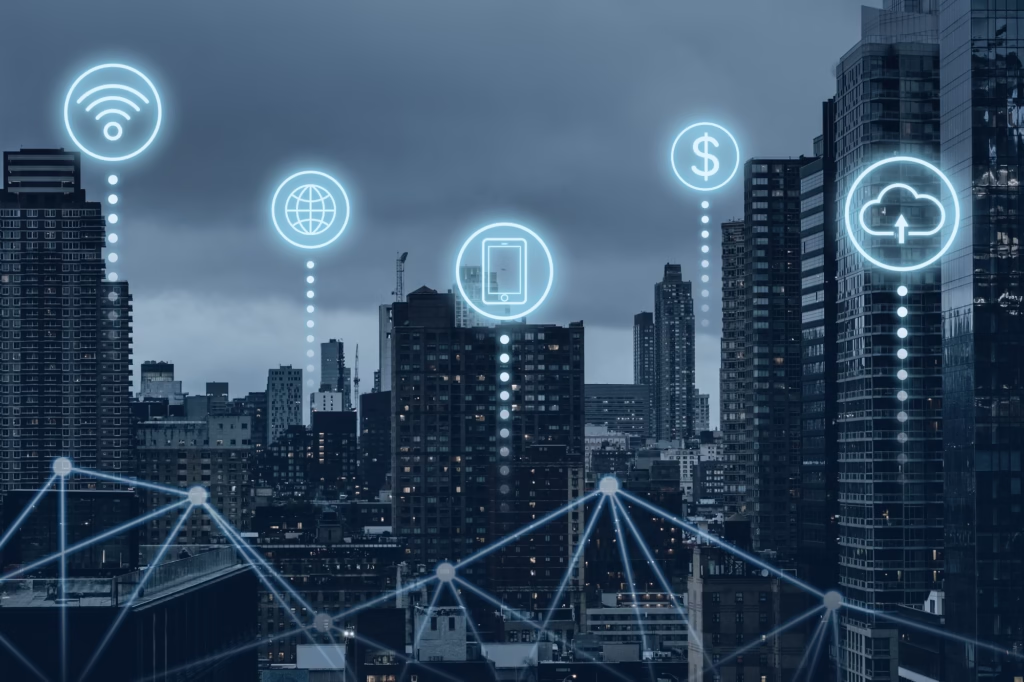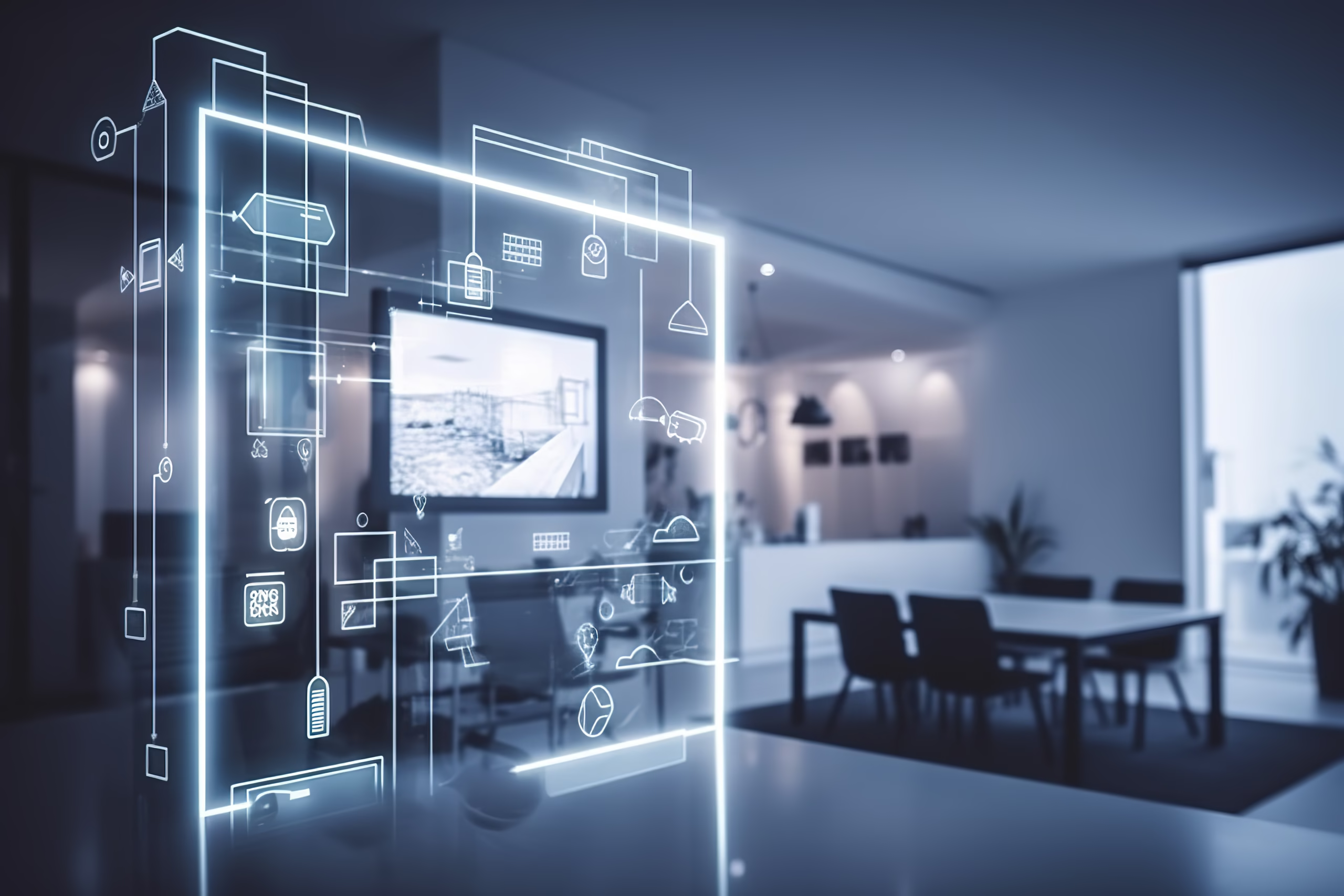Smart homes in the USA represent a significant shift towards more connected living environments. Discover the latest IoT industry trends in smart homes across the USA, including AI, 5G, and new connected technologies that improve efficiency and security. These homes integrate Internet of Things (IoT) devices and systems to provide enhanced comfort, security, energy efficiency, and convenience. From smart thermostats and security cameras to voice-controlled assistants and smart appliances, these devices enable homeowners to manage their living spaces remotely.
The Evolution of Smart Homes in the USA: A Brief History
The journey of smart homes in the USA began with simple automation of lighting and heating systems. Over the years, technological advancements have propelled these systems to become more integrated and intelligent. Today, smart homes use machine learning algorithms, AI, and data analytics to offer personalized experiences. Initially focused on security and convenience, smart homes now prioritize energy efficiency and sustainability.
This evolution has paved the way for advanced smart devices that can monitor energy usage, optimize lighting, and even manage home appliances remotely.
Key IoT Industry Trends Driving the Smart Home Revolution
The IoT industry trends shaping the smart home market in the USA are multifaceted. One of the key trends is the adoption of AI and machine learning to create smarter, more responsive devices. Although, These technologies allow homes to learn from user behavior, anticipate needs, and provide automated solutions.
Another trend is the integration of 5G technology, which enhances the speed and reliability of connected devices, enabling real-time data transfer and responsive automation. Additionally, the rise of voice-activated assistants like Amazon Alexa, Google Assistant, and Apple HomeKit has transformed how homeowners interact with their smart devices.
Smart Home Technologies Transforming the USA: From Connected Devices to AI Integration
Smart home technologies in the USA have evolved beyond mere connectivity to include advanced AI integration. Machine learning algorithms analyze data from various sensors to provide insights into home usage patterns. This information is used to optimize energy consumption, improve security, and enhance user experience. For example, smart thermostats can learn when homeowners are home and adjust temperatures accordingly, reducing energy waste.

Similarly, AI-powered security cameras can recognize faces and alert homeowners to suspicious activity. The integration of AI into smart home systems is making homes more intuitive and responsive to user needs.
Case Studies: Successful Smart Home Deployments in the USA
Several case studies highlight the successful implementation of smart home technologies in the USA. For instance, tech-forward cities like Seattle and San Francisco have embraced smart apartment buildings equipped with connected lighting, automated HVAC systems, and energy-efficient appliances. These deployments have shown significant improvements in energy use and resident satisfaction.
Another example is the use of smart irrigation systems in suburban areas, which optimize water usage based on weather forecasts and soil moisture levels. These case studies demonstrate how smart home technologies can deliver tangible benefits and contribute to sustainability goals.
How IoT Industry Trends Enhancing Energy Efficiency in American Smart Homes
Energy efficiency is a key benefit of smart homes enabled by IoT technologies. By integrating smart meters, homeowners can monitor real-time energy usage and identify areas where efficiency can be improved. Smart thermostats, for instance, learn user preferences and adjust heating and cooling schedules accordingly, reducing energy consumption.
Moreover, smart appliances like refrigerators and washing machines can be controlled remotely, allowing homeowners to avoid peak energy usage times. These innovations are not only environmentally friendly but also economically beneficial, helping users save on utility bills.
The Role of 5G Technology in Enabling Advanced Smart Home Features
5G technology is a game-changer for smart homes in the USA, offering faster speeds, lower latency, and more reliable connections. This technology supports high-bandwidth applications like smart video surveillance, real-time remote monitoring, and augmented reality experiences within the home. For instance, 5G-enabled smart cameras can stream high-quality video feeds to smartphones without buffering, while augmented reality can assist with home repairs and maintenance by overlaying digital instructions on real-world objects.
As 5G networks expand, they will unlock new possibilities for smart home devices, making them even more responsive and capable.
Privacy and Security Challenges in IoT-Connected Smart Homes
As smart homes become more connected, privacy and security become paramount concerns. With multiple devices collecting and transmitting data, there is an increased risk of breaches if proper security measures are not in place. Homeowners must take steps to protect their networks with strong passwords, encryption, and software updates.
Additionally, manufacturers need to prioritize security when designing smart home devices, incorporating features like two-factor authentication and end-to-end encryption. Addressing these challenges is essential to building trust and ensuring that smart homes remain safe environments for families.
Innovative Use Cases: What’s Next for Smart Homes in the USA?
The future of smart homes in the USA holds exciting possibilities. Emerging IoT trends include the use of smart home hubs that act as command centers for all connected devices. These hubs integrate voice, touch, and even facial recognition to streamline interactions with devices. Another trend is the use of robotics, such as automated lawn mowers and cleaning robots, which reduce manual labor and improve convenience.
The integration of virtual reality (VR) and augmented reality (AR) is also on the horizon, enabling users to interact with their smart home systems in immersive ways. These innovations will further blur the lines between physical and digital living spaces.
The Future of Smart Homes: Emerging IoT Industry Trends to Watch in the USA
Looking ahead, the smart home landscape in the USA will continue to evolve with new IoT industry trends. IoT Industry Trends, like predictive maintenance and asset tracking, will influence smart home applications, improving efficiency and reliability. Although, Industrial Internet of Things trends will drive innovations in home security, energy management, and environmental monitoring.
New trends in IoT, such as wearables that monitor health metrics, will also find their place in smart homes, creating holistic wellness environments. However, The IoT industry trends will shape how connected devices interact and integrate with daily life, setting the stage for a more connected future.
A Connected Future for American Smart Homes
Smart homes in the USA are not just about automation; they represent a future where homes are more responsive, efficient, and secure. As IoT technology continues to advance, these trends will drive the evolution of smart living, offering enhanced comfort and convenience to homeowners. The integration of AI, 5G, and innovative security measures will be crucial in shaping the smart home experience.
As we move forward, it’s clear that smart homes are not just a trend but a movement towards a connected, sustainable, and efficient way of living in the USA.

